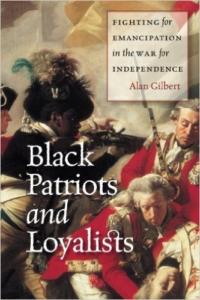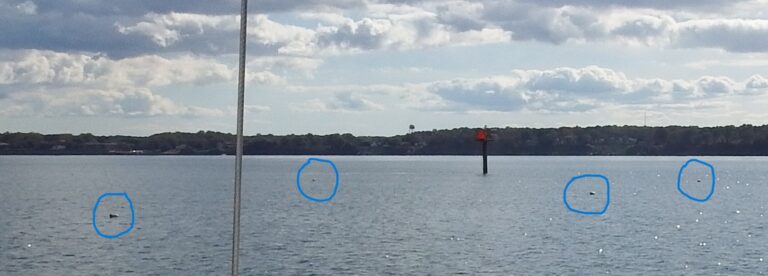| In 1781 the First Rhode Island Regiment fought successfully at the Battle of Yorktown. Alan Gilbert’s new book, “Black Patriots and Loyalists: Fighting for Emancipation in the War for Independence,” shows how the promise of freedom drew enslaved blacks into the Continental Army and the British Army during the Revolutionary War. Gilbert raises significantly the number of African Americans who fought for either side. This excerpt comes courtesy of the Museum of the American Revolution, under construction in Philadelphia. The reference to Dunmore is Lord Earl Dunmore, who freed the blacks as he fled Williamsburg in 1775—provided they fought for the British.
 “The Rhode Island Resolution for Negro Recruitment of 1778 combined the two revolutions for American freedom. It declared: ‘That every slave so inlisting shall, upon his passing muster before Col. Christopher Greene, be immediately discharged from the service of his master or mistress, and be absolutely free, as though he had never been incumber’d with any kind of servitude or slavery.'” “The Rhode Island Resolution for Negro Recruitment of 1778 combined the two revolutions for American freedom. It declared: ‘That every slave so inlisting shall, upon his passing muster before Col. Christopher Greene, be immediately discharged from the service of his master or mistress, and be absolutely free, as though he had never been incumber’d with any kind of servitude or slavery.'”
“Debating the proposal in the legislature, a proslavery delegate suggested that the state could not consistently recruit ‘a band of slaves’ to defend American liberties. In a revolution for the natural rights of man, the inconsistency lay in the bondage this delegate commended. As another delegate imagined, this act would subject Americans to ridicule by the British similar to the one ‘we so liberally bestowed upon them on account of Dunmore’s regiment of blacks.’ Yet opponents could suggest no alternate source of recruits.”
“In Rhode Island, the legislature declared that ‘every able-bodied Negro, mulatto, or Indian man slave…may inlist into either of the said battalions.’ It mandated that ‘every slave so inlisting shall be entitled to and receive all the bounties, wages, and encouragements allowed by the Continental Congress.'”
“The resolution also called for reimbursement of the Rhode Island legislature by the Continental Congress for the purchase of slaves to free in order to fight on the Patriot side. But Congress had not promised to recompense owners. Governor Cooke had written to Washington that whites would not enlist for what the Continental army could pay. Cooke wrote to Washington, ‘Liberty is given to every effective slave to enter the service during the war; and upon passing muster, he is absolutely free, and entitled to all the wages, bounties and encouragements, given by Congress to any soldier enlisting into their service.’ Cooke added, ‘The number of slaves in this State is not great but it is generally thought that three hundred and upward will be enlisted.'”
“Aside from the First Regiment, other free or newly freed black recruits served in Rhode Island. In December 1778, Captain Ebenezer Flagg’s company had twenty-nine black privates and, in the ranks of those whose duties would later become icons in depictions of the American Revolution, one black fifer and one black drummer. In November 1778, Captain David Dexter’s company had thirty-two blacks, and in April 1779, it had thirty-one. On December 31, 1779, the Second Company had thirty black privates and one black fifer. In addition, skilled black workers included two tailors, one carpenter, seven coopers, three wagoners, three teamsters, and one blacksmith.”
“To Patriots, the black First Rhode Island Regiment served as a standard of dedication. In the Battle of Rhode Island between August 5 and 31, 1778, the regiment defended the Continentals’ right flank. According to Samuel Greene Arnold’s History of Rhode Island, ‘Posted behind a thicket in the valley, [Sullivan’s brigade] three times drove back the Hessians who charged repeatedly down the hill to dislodge them.’ The Hessian colonel promptly asked for a transfer ‘because he dared not lead his men into battle, lest his men shoot him for having caused so much loss.'”
“Motivated by freedom and continually engaged in battle, the First Rhode Island Regiment developed its own spirit of militancy. It would become the most fearsome unit on the American side and inspire others throughout the war. In 1781 the regiment camped at Points Bridge in Croton, New York. On May 4, the redcoats staged a surprise attack, killing the commander, Christopher Greene, and a number of black soldiers, who defended him to the death. Led by Lieutenant Colonel Olney, these Rhode Island soldiers would go on to fight at Red Bank, Yorktown, and Fort Oswego.”
“Let’s go sail” is a charter boat operation that includes narratives about the Battle of the Capes and the Siege of Yorktown. To see the rates and reserve a date this spring for a sailboat charter, click here. To check out reviews from sailors, click here. To become a crew member on a charter sail or to tell us your sailing story, click here. |


